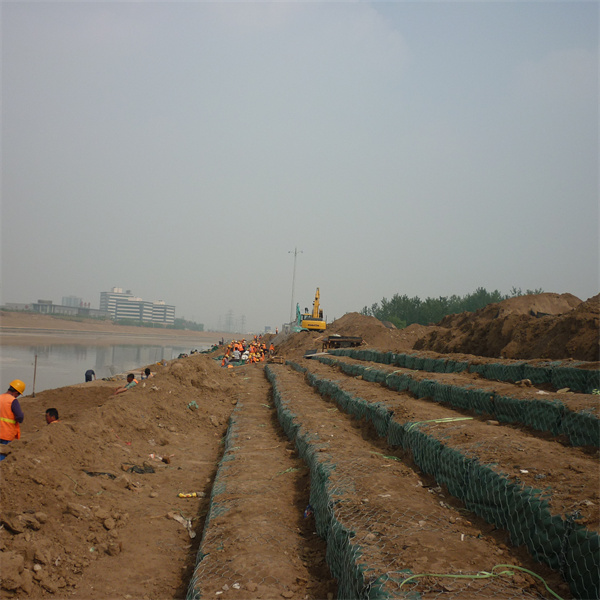ធ្នូ . 24, 2024 14:00 Back to list
Gabion Structures for Effective Erosion Mitigation and Soil Stability Solutions
Gabion Walls for Erosion Control A Sustainable Solution
Erosion is one of the most significant environmental challenges faced today, threatening the integrity of landscapes, waterways, and urban infrastructures. Traditional erosion control methods, such as concrete retaining walls or riprap, can be effective but often come with environmental drawbacks and high costs. In recent years, gabion walls have emerged as a popular and sustainable alternative for erosion control. This innovative solution not only combats erosion effectively but also enhances the natural beauty of the surrounding environment.
What are Gabion Walls?
Gabion walls are structures made from wire mesh cages filled with rocks, stones, or other materials. These cages are designed to be durable and withstand environmental stresses, while the infill provides both structural integrity and aesthetic appeal. Gabion walls can take various forms, including retaining walls, riverbank stabilization, and landscape features. Their adaptability makes them suitable for a wide range of applications in both rural and urban settings.
How Do Gabion Walls Work?
The primary function of gabion walls is to provide a barrier against soil erosion by absorbing and deflecting the energy of flowing water. The open structure allows water to flow through, reducing hydrostatic pressure behind the wall and minimizing the risk of failure. This permeability also encourages vegetation growth, further stabilizing the soil and enhancing ecological health. Additionally, the weight of the stone-filled cages provides a robust counterbalance against lateral forces caused by soil movement or water flow, making gabion walls resilient and effective.
Advantages of Using Gabion Walls for Erosion Control
1. Environmental Benefits Gabion walls promote natural vegetation growth and provide a habitat for wildlife. The porous nature allows for the infiltration of rainwater, minimizing runoff and promoting groundwater recharge.
2. Cost-Effectiveness Comparatively, gabion walls can be more economical than traditional erosion control measures. The materials can often be sourced locally, and the installation process requires less specialized labor.
gabion wall for erosion control

3. Aesthetic Appeal Gabion walls can be constructed using various types of stones, allowing for customization and integration into the landscape design. This can enhance the visual character of parks, gardens, and waterfronts.
4. Durability Made from galvanized steel or coated wire, gabion walls are resistant to rust and degradation. This longevity makes them an ideal solution for areas prone to harsh environmental conditions.
5. Ease of Installation Gabion walls are relatively simple to install, often requiring minimal excavation and site preparation. This efficiency translates into quicker project timelines.
Applications of Gabion Walls
Gabion walls are versatile and can be utilized in numerous ways. In residential areas, they can serve as retaining walls to prevent soil erosion and stabilize slopes. In agricultural settings, gabions can protect farmland from runoff and maintain arable land. For urban environments, they can manage flood risks by stabilizing riverbanks and mitigating the impacts of heavy rains.
In addition to these applications, gabion walls are also used in landscape architecture and design to create visually appealing features, seating areas, and raised beds. With their ability to adapt to various environments, gabion walls can transform functional erosion control structures into valuable landscape components.
Conclusion
As environmental concerns continue to grow, finding sustainable solutions for erosion control is more critical than ever. Gabion walls offer an effective and eco-friendly alternative that addresses the challenges of erosion while enhancing the beauty of natural and urban landscapes. Their combination of durability, cost-effectiveness, and environmental benefits positions them as a highly viable option for both private and public projects. By embracing innovative solutions like gabion walls, we can take significant strides toward preserving our ecosystems and protecting our communities from the detrimental effects of erosion.
-
HESCO Gabion Baskets for Coastal Erosion Prevention
NewsAug.22,2025
-
Longevity and Durability of River Rock Gabion Walls
NewsAug.22,2025
-
How to Integrate Gabion 3D Walls in Urban Planning
NewsAug.22,2025
-
Reno Mattress Gabion Applications in Civil Engineering
NewsAug.22,2025
-
How to Install Wire Mesh for Gabion Baskets Properly
NewsAug.22,2025
-
Best Materials for Filling a Chain Link Gabion
NewsAug.22,2025
-
Wire Mesh Thickness Impact on Gabion Wall Load Bearing
NewsAug.12,2025






